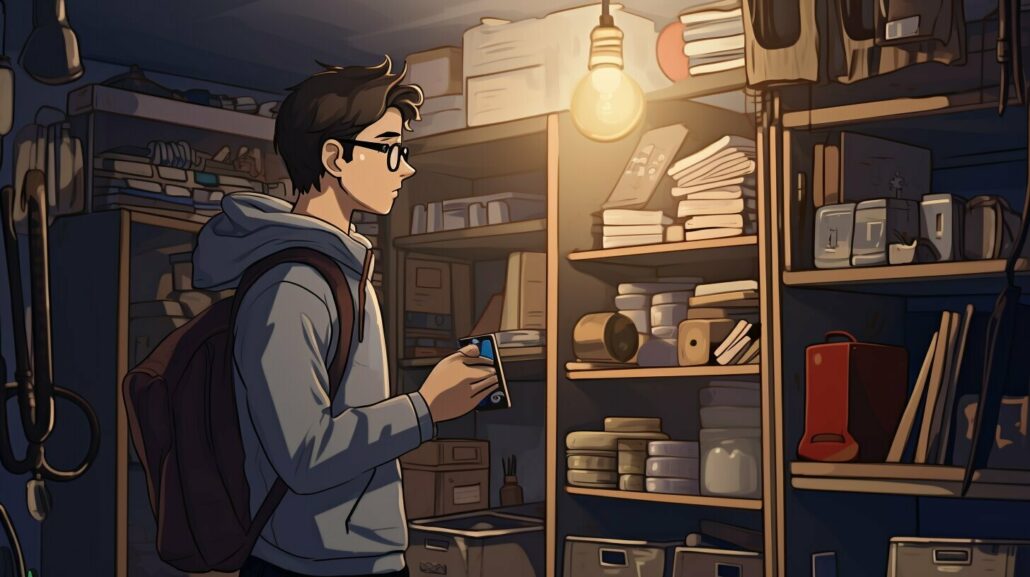In this Urban Prepping 101 guide, I will share essential tips and skills to help you navigate and survive in an urban environment during a crisis.
Mastering survival skills in an urban environment is crucial, considering the majority of the world’s population now lives in cities. This guide emphasizes the need for a mix of urban prepping and street smarts in order to navigate and survive in a city during a crisis. It highlights the importance of blending in, finding and purifying water, foraging and scavenging for food, finding shelter in abandoned buildings, and moving with stealth to avoid detection. These skills are essential for urban survival and should be incorporated into everyday life to be fully prepared for any disaster or emergency situation.
Key Takeaways:
- Mastering survival skills is crucial in an urban environment.
- Blending in is a key strategy for urban survival.
- Knowing how to find and purify water is essential during emergencies.
- Foraging and scavenging for food can be vital when traditional supplies are limited.
- Finding shelter in abandoned buildings can provide refuge in urban areas.
Understanding Urban Prepping and its Significance
Urban prepping is a vital practice that involves being prepared for emergencies and disasters in urban environments, and in this section, I will delve into the significance of urban prepping and provide you with a comprehensive guide on how to prepare for any crisis in the city.
Living in a city comes with its own set of challenges during times of crisis. The density of population, limited resources, and potential chaos make urban environments particularly vulnerable. That’s why urban prepping is essential. It equips individuals with the skills and knowledge needed to navigate through and survive in cities when faced with emergencies.
By mastering urban prepping, you gain the ability to blend in seamlessly with the urban landscape, ensuring your safety and security. You’ll learn how to source and purify water, forage and scavenge for food, find shelter in abandoned buildings, and move with stealth to avoid detection. These skills are crucial for urban survival and can make all the difference when faced with a crisis.
The Significance of Urban Prepping and Street Smarts
“In a city, being prepared means not just having supplies, but also having the skills to navigate through the urban jungle. It’s about developing street smarts and adapting quickly to unpredictable situations. Urban prepping is not just about surviving, but thriving in the face of adversity.”
Urban prepping goes beyond stockpiling survival gear. It’s about adopting a mindset that prepares you to face challenges head-on. By incorporating urban prepping into your daily life, you ensure that you are always ready for the unexpected. Being prepared for emergencies in a city is not a matter of if, but when. By taking the necessary steps to prepare, you can safeguard yourself and your loved ones.
| Key Urban Prepping Skills | Benefits of Urban Prepping |
|---|---|
| Blending in with the urban environment | Increased personal safety and security |
| Sourcing and purifying water | Access to a clean and reliable water supply during emergencies |
| Foraging and scavenging for food | Reduced reliance on traditional food sources |
| Finding shelter in abandoned buildings | Protection from the elements and potential dangers |
| Moving with stealth | Minimized risk of encountering danger in urban landscapes |
By honing your urban survival skills through prepping, you ensure that you are prepared to face any crisis that may arise. From natural disasters to civil unrest, being well-equipped with the knowledge and resources to navigate through urban environments can make all the difference in ensuring your safety and the safety of those around you.
Blending In: The Key to Urban Survival
When it comes to urban survival, blending in with your surroundings is a crucial skill that can significantly increase your chances of staying safe and secure in a city during a crisis. In a densely populated urban environment, standing out can make you a target for criminals or other threats. By adopting the right strategies and urban survival essentials, you can navigate through the chaos unnoticed and increase your chances of survival.
The Power of Inconspicuousness
One of the first things you need to understand is the power of inconspicuousness. Avoid drawing attention to yourself by dressing appropriately and grooming in a way that fits the local culture. Wearing clothing that matches the style of the area and avoiding excessive jewelry can help you blend in seamlessly. Additionally, being aware of your body language and mimicking the behavior of those around you can contribute to your ability to go unnoticed.
Utilize Urban Landscapes
Another key aspect of blending in is utilizing the urban landscapes to your advantage. Familiarize yourself with the layout of the city and plan your routes accordingly. Avoid high-risk areas and choose less crowded or unconventional paths. Take advantage of alleyways, backstreets, and other hidden areas that can provide cover and reduce your visibility. By staying out of sight, you lessen the chances of encountering danger and increase your overall safety.
Cultivate Street Smarts
Lastly, it’s essential to cultivate street smarts to enhance your ability to blend in and navigate urban environments. Be observant of your surroundings and trust your instincts. Stay aware of potential threats and practice situational awareness at all times. Avoid drawing unnecessary attention to yourself by keeping a low profile and limiting your interactions with strangers. Remember, the less attention you attract, the better your chances of survival in an urban crisis.
| Key Strategies for Blending In: |
|---|
| 1. Dress appropriately and groom to fit in with the local culture. |
| 2. Be mindful of your body language and mimic the behavior of others. |
| 3. Familiarize yourself with the layout of the city and plan safe routes. |
| 4. Utilize hidden areas and unconventional paths to reduce visibility. |
| 5. Cultivate street smarts and practice situational awareness. |
By mastering these urban survival strategies and incorporating them into your daily life, you can enhance your ability to navigate through a city during a crisis. Blending in, utilizing the urban landscapes, and cultivating street smarts are essential skills that can make a significant difference in your chances of survival. Stay prepared, stay inconspicuous, and stay safe in any urban environment.
Water: Sourcing and Purification
In a city, access to safe drinking water becomes a top priority during a crisis, and this section will guide you on how to source and purify water effectively. When traditional water supplies are compromised, it is crucial to know alternative methods to ensure your hydration needs are met.
To start, let’s discuss water sourcing. Urban environments offer numerous potential water sources, such as rivers, lakes, and even rainwater. However, it is important to remember that not all water sources are safe for consumption. Contaminated water can pose serious health risks. Therefore, it is essential to know how to identify and collect water from reliable sources.
Once you have sourced water, the next step is water purification. There are several methods you can use to make water safe for drinking. Boiling is a simple and effective way to kill most bacteria and parasites. It is recommended to bring the water to a rolling boil for at least one minute. The distillation process involves boiling water and collecting the steam, leaving behind impurities. Additionally, water purification tablets can be used to kill harmful microorganisms.
Remember, having a reliable water filter in your emergency kit is also crucial. A good-quality filter can remove most contaminants, making water safe to drink. It is wise to invest in a filter that can handle a variety of water sources and that is portable for easy use during an emergency.
| Water Sourcing | Water Purification |
|---|---|
| – Rivers | – Boiling |
| – Lakes | – Distillation |
| – Rainwater | – Water purification tablets |
In summary, sourcing and purifying water are essential skills to master for urban survival. By understanding how to identify safe water sources and use effective purification methods, you can ensure your access to clean drinking water during a crisis. Remember to keep a reliable water filter in your emergency kit as an additional safeguard. Stay prepared and stay hydrated!
Foraging and Scavenging for Food
With limited access to food supplies during a crisis, learning how to forage and scavenge for food in an urban environment is crucial for your survival. In an emergency situation, traditional food sources may be scarce or unavailable, making it necessary to rely on resourcefulness to sustain yourself. Here are some strategies and tips for finding food in a city:
- Identify edible plants: Take the time to learn about edible plants that can be found in urban areas. Look for common edible weeds, such as dandelions and wild greens, which can be used in salads or cooked as a side dish.
- Search for abandoned gardens: Urban areas often have abandoned gardens or neglected fruit trees. These hidden gems can provide a source of fresh produce during a crisis. Remember to only take what you need and leave some for others.
- Visit dumpsters and trash bins: While it may not sound appealing, dumpsters and trash bins can sometimes yield edible food that has been discarded. Use caution and common sense when scavenging, ensuring that the food is safe to consume.
- Utilize urban wildlife: Urban areas are often home to various wildlife, such as pigeons, squirrels, and even fish in water bodies. Learn about safe and legal methods for hunting or trapping these animals to supplement your food supply.
Remember, foraging and scavenging for food should only be done as a last resort during an emergency situation. Prioritize safety and be cautious of your surroundings. It’s important to research and familiarize yourself with local laws and regulations regarding foraging and hunting to ensure you are acting responsibly and legally.
| Tip for success: | Carry a small survival guide or smartphone app that can help you identify edible plants and provide information on safe consumption. |
|---|---|
| Quote: |
|
Shelter: Finding Refuge in Abandoned Buildings
When seeking refuge in an urban environment, abandoned buildings can provide essential shelter, and in this section, I will share valuable insights on finding and securing safe shelter in a city during a crisis.
First and foremost, it’s crucial to assess the structural integrity of any abandoned building before seeking shelter. Look for signs of damage or instability, such as collapsed walls or weakened foundations. Choose a building that appears sturdy and free from major structural issues.
Once you have found a suitable building, it’s important to make it as secure as possible. Barricade entrances with furniture or other heavy objects to prevent unwelcome visitors from entering. Consider reinforcing doors and windows with plywood or boards to add an extra layer of protection.
In addition to securing the building, it’s essential to be mindful of your surroundings and maintain a low profile. Keep noise to a minimum and avoid drawing attention to yourself. Remember, blending in is key to urban survival. Avoid using lights at night that may attract unwanted attention. Instead, use minimal lighting indoors and cover windows with dark blankets or curtains to remain discreet.
Table: Essential Supplies for Sheltering in an Abandoned Building
| Supplies | Description |
|---|---|
| Flashlight | For navigating in the dark and finding your way around the building. |
| Sleeping bag or blankets | To provide warmth and comfort during your stay. |
| Canned food and non-perishable items | For sustenance when access to food is limited. |
| Water containers | To store and ration potable water. |
| First aid kit | For treating minor injuries and ailments. |
| Personal hygiene items | To maintain cleanliness and prevent the spread of illness. |
Remember, finding shelter in an abandoned building should be a last resort. Be prepared to evacuate if necessary and have a backup plan in place. Always prioritize your safety and well-being in any survival situation.
Moving with Stealth: Navigating Urban Landscapes
Navigating an urban environment during a crisis requires moving with stealth and caution, and in this section, I will share effective strategies to help you navigate city streets and urban landscapes safely. In a chaotic and potentially dangerous situation, it’s crucial to blend in and avoid drawing attention to yourself. Here are some key tips and urban survival strategies to keep in mind:
1. Dress the Part
When moving through a city, it’s important to dress appropriately to blend in with the surroundings. Avoid wearing bright colors or clothing that stands out, as this can make you a target. Instead, opt for neutral and inconspicuous attire. Dressing like a local can help you go unnoticed and avoid unnecessary attention.
2. Map Out Your Routes
Prioritize knowing the lay of the land and mapping out multiple routes to your destination. Be aware of main roads, backstreets, and alleys that can offer alternative paths. Avoid crowded areas that may pose higher risks, and try to stick to areas with good visibility to avoid surprises or potential threats.
3. Use the Buddy System
Traversing urban environments alone during a crisis can be risky. Whenever possible, establish a buddy system and move in pairs or small groups. This not only provides an extra set of eyes and ears but also offers emotional support and enhances safety. Make sure to establish clear communication signals and protocols to stay connected and react swiftly if the need arises.
By incorporating these strategies into your urban survival arsenal, you’ll increase your chances of navigating city streets and urban landscapes undetected. Remember, staying inconspicuous and blending in is key to moving with stealth and keeping yourself safe in an urban crisis.
Incorporating Urban Prepping into Everyday Life
Urban prepping shouldn’t be limited to emergencies alone; it should become a way of life. In this section, I will share valuable tips on how to incorporate essential urban prepping practices into your everyday routine. By integrating these habits into your daily life, you’ll be better prepared to handle any unexpected situations that may arise in an urban environment.
Create a Daily Urban Prepping Checklist
Start by creating a daily checklist that includes key urban prepping tasks. These can be simple actions such as checking your emergency supplies, refreshing your knowledge of escape routes, or practicing basic first aid skills. By incorporating these tasks into your regular routine, you’ll develop a habit of preparedness that will serve you well in any emergency. Remember, consistency is key in making urban prepping a part of your daily life.
Build a Network of Like-Minded Individuals
Connecting with others who share your interest in urban prepping is a great way to exchange knowledge and ideas. Join online communities or attend local meetups to meet like-minded individuals who can offer valuable insights and practical tips. Building a network of support will not only enhance your prepping efforts, but it will also provide a sense of community and security in times of need.
Continuously Expand Your Knowledge and Skills
Urban prepping is a never-ending journey of learning and adapting. Stay up to date with the latest trends, techniques, and technologies related to urban survival. Explore different methods of self-defense, emergency communication, and urban navigation. Continuously honing your skills and expanding your knowledge will ensure that you’re always prepared to overcome the challenges that may arise in an urban environment.
| Key Takeaways: |
|---|
| – Incorporate prepping tasks into your daily routine |
| – Build a network of like-minded individuals |
| – Continuously expand your knowledge and skills |
By integrating urban prepping into your everyday life, you’ll develop a sense of self-reliance and confidence in your ability to navigate and survive in an urban environment. Remember, preparedness is not a one-time event but an ongoing process. Stay vigilant, stay informed, and continue to adapt to the ever-changing circumstances of city life.
Learning from Past Urban Disasters
By studying past urban disasters, we can learn invaluable lessons that will enhance our urban emergency preparedness, and in this section, I will examine significant urban disasters and the lessons we can derive from them.
One notable disaster that has shaped urban emergency preparedness is the 9/11 terrorist attacks in New York City. This tragedy highlighted the importance of effective communication and coordination between emergency responders, government agencies, and the public. It emphasized the need for comprehensive emergency response plans that address the unique challenges of densely populated urban areas. The lesson learned from 9/11 is the significance of robust communication systems and protocols, ensuring efficient and timely dissemination of critical information during emergencies.
Another disaster that provides critical lessons for urban emergency preparedness is Hurricane Katrina, which devastated New Orleans in 2005. The response to this catastrophe exposed weaknesses in disaster planning, evacuation procedures, and the ability to provide essential services to vulnerable populations. The lesson learned from Hurricane Katrina is the importance of inclusive emergency plans that consider the needs of all residents, particularly those with limited resources or mobility. It underscored the need for effective evacuation strategies, well-equipped emergency shelters, and the provision of essential supplies and medical aid.
| Disaster | Lessons Learned |
|---|---|
| 9/11 terrorist attacks | Effective communication and coordination are crucial in urban emergencies. |
| Hurricane Katrina | Inclusive emergency plans and well-equipped shelters are essential. |
| Fukushima nuclear disaster | Ensuring the safety and resilience of critical infrastructure is paramount. |
The Fukushima nuclear disaster in 2011 serves as a poignant reminder of the importance of safeguarding critical infrastructure in urban areas. The meltdown of the nuclear power plant following a massive earthquake and tsunami highlighted the significant long-term consequences of not prioritizing infrastructure resilience. The lesson learned from Fukushima is the need for robust infrastructure planning and regular safety assessments to minimize the impact of natural disasters on vital systems.
Key Lessons:
- Effective communication and coordination are crucial in urban emergencies.
- Inclusive emergency plans and well-equipped shelters are essential.
- Ensuring the safety and resilience of critical infrastructure is paramount.
By learning from these past urban disasters, we can better understand the challenges and risks associated with emergencies in densely populated areas. Armed with this knowledge, we can strengthen our urban emergency preparedness, develop comprehensive response plans, and implement strategies that prioritize the safety and well-being of all residents during times of crisis.
Conclusion
With the knowledge and skills acquired from this Urban Prepping 101 guide, you are better equipped to navigate and thrive in urban environments during crises. Stay prepared, stay safe, and embrace the practice of urban prepping.
In today’s world, where the majority of the population resides in cities, mastering survival skills in an urban environment is crucial. This comprehensive guide has highlighted the importance of blending in during a crisis, finding and purifying water, foraging and scavenging for food, finding shelter in abandoned buildings, and moving with stealth. These skills are essential for urban survival and should not be overlooked.
By incorporating these urban survival skills into your everyday life, you can be fully prepared for any disaster or emergency situation that may arise. Being proactive and adopting a prepper mindset is the key to staying safe and ensuring the well-being of yourself and your loved ones.
Remember, urban prepping is not just about waiting for a crisis to occur. It’s about being prepared in advance and integrating these skills seamlessly into your daily routine. By doing so, you can build resilience and empower yourself to tackle any challenges that come your way.
FAQ
Q: What is urban prepping?
A: Urban prepping refers to the practice of preparing for emergencies or disasters specifically in a city or urban environment. It involves acquiring the necessary skills, knowledge, and supplies to navigate and survive in an urban setting during a crisis.
Q: Why is urban prepping important?
A: Urban prepping is essential because the majority of the world’s population now lives in cities. In the event of a disaster or emergency, cities can become chaotic and resources may become scarce. Urban prepping equips individuals with the skills and preparedness necessary to survive and thrive in these challenging situations.
Q: How can I blend in during a crisis in the city?
A: Blending in during a crisis in an urban environment is crucial for your safety. It involves dressing inconspicuously, avoiding drawing attention to yourself, and adapting to the behavior and appearance of the surrounding population. Being aware of your surroundings and adopting a low-profile approach can help you navigate through the city undetected.
Q: How can I find and purify water in an urban environment?
A: Sourcing and purifying water in an urban environment can be a challenge during a crisis. You can search for alternative water sources such as rivers, lakes, or even rainwater. To purify water, you can use methods like boiling, using water purification tablets, or filtering it through a portable water filter system.
Q: What are some tips for foraging and scavenging for food in the city?
A: When traditional food supplies are limited, foraging and scavenging for food becomes necessary in an urban environment. Look for edible plants in parks or abandoned lots, search for overlooked food sources such as dumpsters or abandoned buildings, and learn how to identify and safely consume wild edible plants and insects if needed.
Q: How can I find shelter in abandoned buildings during a crisis?
A: In an urban environment, abandoned buildings can provide temporary shelter during a crisis. When seeking shelter in these structures, it’s important to prioritize safety and security. Look for structurally sound buildings, avoid hazardous areas, and use caution when exploring unfamiliar spaces. Carry essential supplies like a flashlight, rope, and a first aid kit for any unforeseen circumstances.
Q: How can I move with stealth in urban landscapes?
A: Moving discreetly and staying undetected in urban landscapes is essential for your safety during a crisis. Walk quietly, avoid well-lit areas, use cover and concealment to your advantage, and seek alternative routes to avoid crowded areas or potential dangers. These strategies can help you navigate urban environments without drawing attention to yourself.
Q: How can I incorporate urban prepping into my everyday life?
A: Urban prepping should not be limited to just preparing for emergencies. It’s important to integrate urban survival skills and mindset into your daily routines. This can include learning basic first aid, practicing situational awareness, developing self-defense skills, and gradually accumulating emergency supplies and resources over time. By incorporating these practices into your everyday life, you’ll be better prepared for any unexpected situation.
Q: What can we learn from past urban disasters?
A: Studying past urban disasters can provide valuable insights and lessons for future emergency preparedness. It allows us to understand the challenges faced by individuals and communities during these crises and identify areas for improvement. By analyzing past disasters, we can develop better strategies, improve response plans, and enhance urban prepping efforts.










